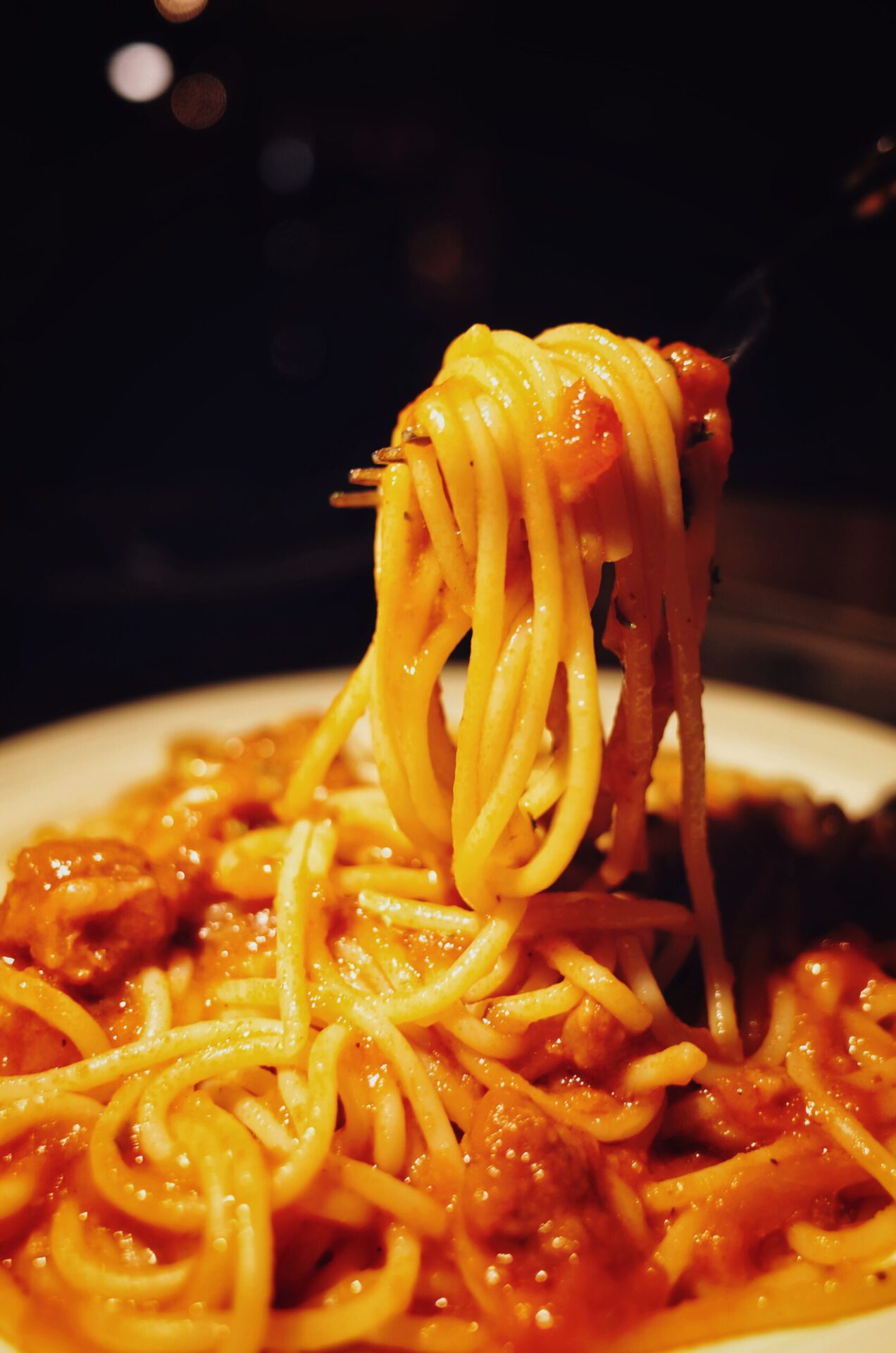Imagine an evening out in good company, one during which you eat, laugh, joke, and lose track of time. It’s late, but there are still stories and anecdotes to tell, more bottles of wine to uncork. Someone invites everyone home to continue the evening together. It’s in this very moment that the intuition comes:
“Ce li facciamo due spaghetti?” (“Shall we have some spaghetti?”)
It’s a sincere, irresistible proposal and, considering the hour, our appetites are peeping out. After all, there is always room for two strands of pasta, which have never hurt anyone. Within moments, a few movements seem to be choreographed: water is put on the stove, the pasta is dropped into the pot, the spaghetti is tossed with sauce, and we all eat together. Tasty and timely, the midnight pasta satiates those who have an appetite while reviving the spirits of those who are feeling sleepy.
This is how la spaghettata di mezzanotte (“the midnight spaghetti”) takes shape. This dish is one of the most representative rituals of Italian conviviality, which escapes the schemes of an ordinary meal, but still revolves around sharing the most iconic food of our culture.
There is no specific recipe to follow, there is no right or wrong, there are no strict methodological rules, and there are no family cookbooks handed down from generation to generation. The only ingredients are good company, some pasta, and a spark of improvisation, an art in which Italians are second to none. Often, la spaghettata di mezzanotte is a simple spaghetti aglio, olio, e peperoncino (garlic, oil, and hot chili pepper) because it doesn’t require much skill, relies on pantry staples, and is ready in just a few minutes. This pasta is perfect, so much so that it has become the symbol of la spaghettata di mezzanotte. However, everyone prepares la spaghettata di mezzanotte as they prefer, in total freedom, according to the moment and their tastes.
This is the beauty of midnight spaghetti: la spaghettata di mezzanotte is neither a dish nor a meal. It’s an experience of sharing.
Perhaps it’s the only dining experience in which we don’t assume particular culinary expectations. Even if the resulting pasta is not gourmet, it’s still okay. In fact, the less elaborate the execution, the more heartfelt and spontaneous the result. For those who are not very gifted in the kitchen, preparing this heartwarming dish doesn’t even require you to set a table: some people eat it standing up, some on the couch, some directly from the pan. All meal conventions are skipped, and we don’t pay too much attention to formalities. The ritual of midnight spaghetti is flexible, even when it comes to time. It can be earlier or later than midnight, no problem. The last two late-night spaghetti parties I’ve attended took place well past midnight, and there was even a bit of tomato on the pasta. But what does that matter?
Once upon a time, spaghetti aglio, olio, e peperoncino was the encore of a trattoria dinner. For the most beloved customers, or for those who had stayed longer than anyone else, the trattoria’s host would come straight from the kitchen with the big steaming pan, ready to hand out plates of pasta as if they were glasses of bitter digestive. These places celebrate the Italian spirit of simple foods, of the need for satiety even after a dinner out, of the informal sharing that transforms restaurateurs into hosts and customers into guests. At home, on the other hand, la spaghettata di mezzanotte is even more widespread and everlasting–in defiance of fast food, delivery services, and late-night supermarkets–proving that a spaghetti in friendship is better than the convenience of a ready-made dish.
The midnight spaghetti is the final act–calm, but with a pinch of boisterous fraternity–of the most successful Italian evenings. It’s a filiform and flavorful curtain that slowly comes down on a day that we will talk about tomorrow, if only for the way it ends: in company, carefree, in front of a nice plate of pasta.

